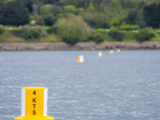English marine areas receive highest levels of protection
July 17, 2023England’s first three Highly Protected Marine Areas, namely Allonby Bay, North East of Farnes Deep, and Dolphin Head, have now been granted the highest level of protection in order to safeguard valuable marine species and habitats. This move is a significant step towards achieving the UK government’s marine conservation targets and fulfilling commitments outlined in the Environmental Improvement Plan and 25 Year Environment Plan. It also aligns with global obligations, including the UK-led Kunming-Montreal Global Biodiversity Framework, which aims to protect at least 30% of the world’s oceans by 2030.
Research has shown that enhanced protections can lead to increased biodiversity and larger populations of species in English seas and surrounding waters. This, in turn, contributes to the long-term sustainability and productivity of the fishing industry. For example, the Lyme Bay reserve, one of the largest protected areas in the UK, has demonstrated higher levels of biodiversity within its boundaries compared to outside, preserving species like pink sea fans, lobsters, and scallops.
Marine Minister Lord Benyon emphasizes the importance of Highly Protected Marine Areas in recovering marine ecosystems and ensuring the flourishing of species and habitats. This initial designation marks a significant milestone in the UK’s ongoing efforts, with further announcements expected in the future.
Allonby Bay is particularly significant due to its “blue carbon” habitats, which play a crucial role in carbon capture and storage, aiding in the fight against climate change. The protection of this area also benefits various shorebirds, including curlews and oystercatchers, which are attracted to its unique habitats.
North East of Farnes Deep will now enjoy Highly Protected Marine Area status, which will safeguard its complex seabed habitat. This habitat is vital for commercially important fish species such as haddock, angler fish, and surmullet, as it provides essential spawning and nursery grounds.
Dolphin Head has suffered from degradation caused by human activities like trawling and scallop dredging. The new designation presents an opportunity for the complete recovery of habitats and species in this area. In addition to attracting various seabirds and marine mammals, such as black-legged kittiwakes and harbour porpoises, Dolphin Head is home to feeding and nursery grounds for commercially significant fish species like cod, herring, and plaice, as well as ecologically important habitats like ross worm reefs.
Tony Juniper, chair of Natural England, highlights the positive impact of Highly Protected Marine Areas on the long-term sustainability of these oceanic regions. He explains that these areas help mitigate the effects of climate change while promoting the recovery of marine ecosystems and supporting the fish, marine mammals, and seabirds that depend on them. Natural England is excited to collaborate with the government in identifying further marine areas with important species and habitats that warrant the same level of protection in the future.
The government’s decision to designate these three Highly Protected Marine Areas follows a comprehensive 12-week consultation process conducted last year. The final decision took into account a wide range of perspectives, considering the ecological significance of nature restoration in these sites as well as their social and economic implications.
These initial designations are just the beginning, as the government remains committed to identifying and designating additional suitable sites as Highly Protected Marine Areas. Any future selections will be subject to consultation.


